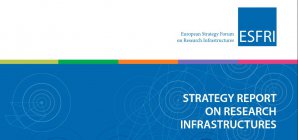ESFRI report alerts to risks of shutting down neutron facilities in Europe
Projection foresees major instantaneous reduction in neutron instruments available to Europe’s scientists once ILL shuts down.
Inês Crespo, 20/05/2016

The European Strategy Forum on Research Infrastructures (ESFRI) was established in 2002, with a mandate from the EU Council to support a coherent and strategy-led approach to policy-making on research infrastructures in Europe, and to facilitate multilateral initiatives leading to the better use and development of research infrastructures, at EU and international level.
As part of its plan, ESFRI has recently published a “Strategy Report on Research Infrastructures” where we can find, among others, an assessment of the future landscape of neutron scattering facilities in Europe. The Landscape Analysis identifies the existing resources, the gaps and the potential evolution of the field in the foreseeable future.
In the report ESFRI recognises the importance of neutron scattering to science. Europe currently leads neutron science, offering 32000 instrument days per year to over 6000 users from both academia and industry who use the results to inform a myriad of scientific fields. The construction of the future European Spallation Source (ESS) is seen as an important step for the evolution of European science.
However, the future doesn’t bring only brightness. The report alerts to the big reduction in capacity neutron scattering will go through in Europe in the coming years. Two-thirds of neutron sources in Europe were built in the 60s and 70s and will shut down in the coming decade. By 2025 Europe may have only five functioning medium or high flux neutron sources – most probably ILL, FRM-II, ISIS, ESS and the Paul Scherrer Institute (PSI). Major sources such as the Laboratoire Léon Brillouin (LLB) in France and BER-II in Germany are already scheduled to shut down in 2020, and others are destined to follow.
This projection will have a major impact on European science. The experts working on the assessment concluded that the longevity of ILL is a crucial issue that must be managed with great care. When ILL shuts down there will be an instantaneous reduction in neutron instruments available to Europe’s scientists. The report thus presents a number of scenarios for instrument availability depending on different possible dates for the ILL closure.
Report available at http://www.esfri.eu/roadmap-2016.




